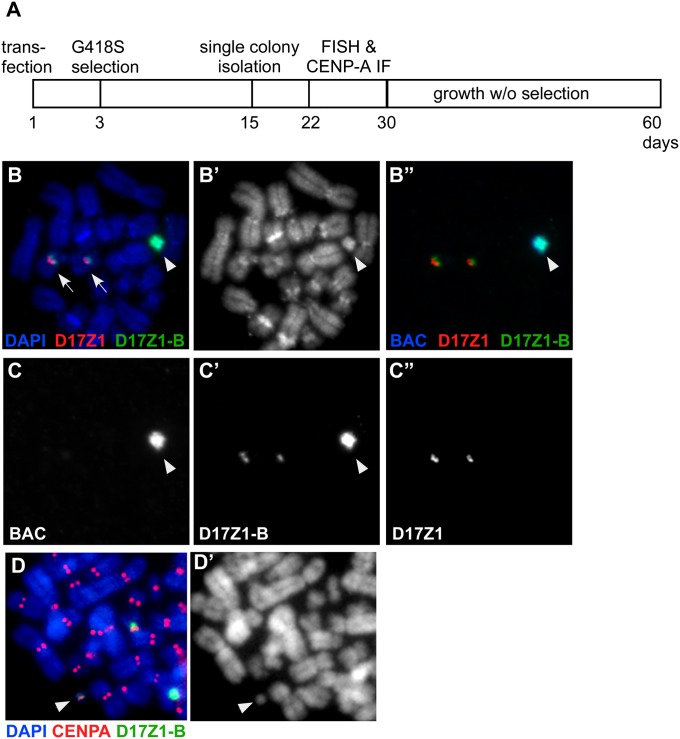Fig. 2.
HAC assays confirm that D17Z1-B can form de novo centromeres. (A) Schematic of HAC assay. BAC constructs containing large D17Z1-B (or D17Z1 control) sequence inserts and a neomycin-selectable marker were introduced into proliferating human HT1080 cells. After 2–3 d, cells were grown in medium containing G418 sulfate (G418S). By day 15, drug-resistant colonies were isolated and expanded to evaluate centromere assembly. (B) FISH with probes to BAC vector, D17Z1, and D17Z1-B shows that the HAC (arrowhead) hybridizes only with D17Z1-B and BAC probes. Endogenous HSA17s are denoted by arrows. B shows a merged image; B′ shows DAPI staining only; B′′ shows BAC (blue), D17Z1 (red), and D17Z1-B (green). (C) Single-channel images of B showing that only the HAC contains BAC and D17Z1-B sequences. C shows BAC; C′ shows D17Z1-B; C′′ shows D17Z1. (D) CENP-A immunostaining and FISH showing that the D17Z1-B–derived HAC (green) assembles a kinetochore, as denoted by CENP-A (red). D′ is DAPI staining.

